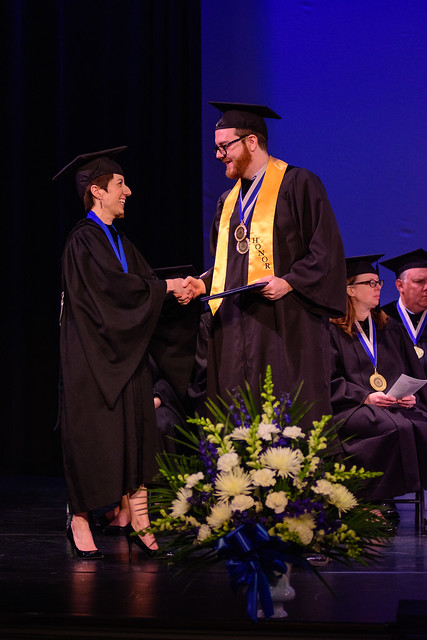Johnson College, a two-year technical college, was founded by Orlando S. Johnson, a wealthy coal baron in the Scranton area who died in 1912. Mr. Johnson left the bulk of his estate to establish and maintain a trade school and his purpose became the mission of the College as an institution “where young men and women can be taught useful arts and trades that may enable them to make an honorable living and become contributing members of society.”
A board of directors was created and a 65-acre tract in Scranton known as the William H. Richmond estate was selected as the site for the new enterprise. Opening in 1912, the school admitted young men and women who had completed a minimum of eight years of school and were 14 years old.
In 1964, the school became a post-secondary institution requiring applicants to be high school graduates or to have equivalency certificates. The name of the institution was changed from the Johnson Trade School to the Johnson School of Technology in 1966. The school was incorporated as a non-profit corporation in 1967, and in 1968 it was licensed by the Commonwealth of Pennsylvania Bureau of Private Trade Schools. Approval to award a degree of Associate in Specialized Technology came in 1974, with accreditation by the National Association of Trade and Technical Schools (NATTS) following in 1979.
In 1985, the name of the school was changed to Johnson Technical Institute; the three-year Associate in Specialized Technology degree programs were changed to two-year programs in 1987.

Technological Changes
Responding to the continuing technological changes in society, the board, administration, faculty, staff, and students conducted an intense two-year self-study, beginning in 1994, to assess the institution’s strengths and weaknesses. The study led to a formal application to the Commission on Higher Education for status as a two-year college. The Pennsylvania Department of Education approved the application of Johnson Technical Institute as a two-year college in 1997; the change of name to Johnson College was instituted in 2001.
The graduating class of 1998 was the first class to receive either an Associate in Applied Science (A.A.S.) degree or an Associate in Science (A.S.) degree.
Continuing with the expansion of technology programs, a Veterinary Technology program was introduced in 1994. Clinical classes were held off-campus until the erection of a 6,500 square foot Science Center on campus was completed. The program received full accreditation from the American Veterinary Medical Association (AVMA) for the fall semester of 2000. In January 2004 the College opened the Animal Care Center as a teaching facility to enhance the Veterinary Technology educational experience. In 1995, Electrical Construction & Maintenance Technology was added to the curriculum, and the Bureau of Private Licensed Schools approved the Diesel Truck Technology program in November of 1996.
Today, approximately 500 students pursue their hands-on training in 18 two-year associates degree and 5 academic certificate programs. The College’s eight buildings include a library, gymnasium, physical fitness center, classrooms, shops, laboratories, and administrative offices.
Staying Up-To-Date
Over the years, Johnson College has served the region by providing programs of technical education and continually evaluates its programs to meet the technology needs of society. This evaluation process is assisted by the Program Advisory Committees of each program area, consisting of regional business and community leaders who meet several times during the year to advise the College on curriculum content, length of programs, and current materials and equipment. They also review placement and retention statistics. The College has maintained the initial intent of Mr. Johnson with a professional and dedicated staff to ensure up-to-date training that prepares graduates to readily step into entry-level positions in business and industry.

A Computer Information Technology program that specializes in enterprise computer networking was approved by the Commission on Higher Education in 2000, and a curriculum in Radiologic Technology received the Commission’s approval for the fall, 2002 semester. The Radiologic Technology program received accreditation by the Joint Review Committee on Education in Radiologic Technology (JRCERT) in May 2005. The Distribution & Supply Logistics Technology program was approved as a program offering for the fall, 2006 semester.
The current student body is comprised of approximately 71% males and 29% females. The students spend 60% of their time in technology courses and the remainder in general education classes. The College has an extensive program of internships, cooperative education, and practicum with a variety of businesses and professional organizations.
Today, Johnson College is a valuable resource for the changing technological needs of our society
